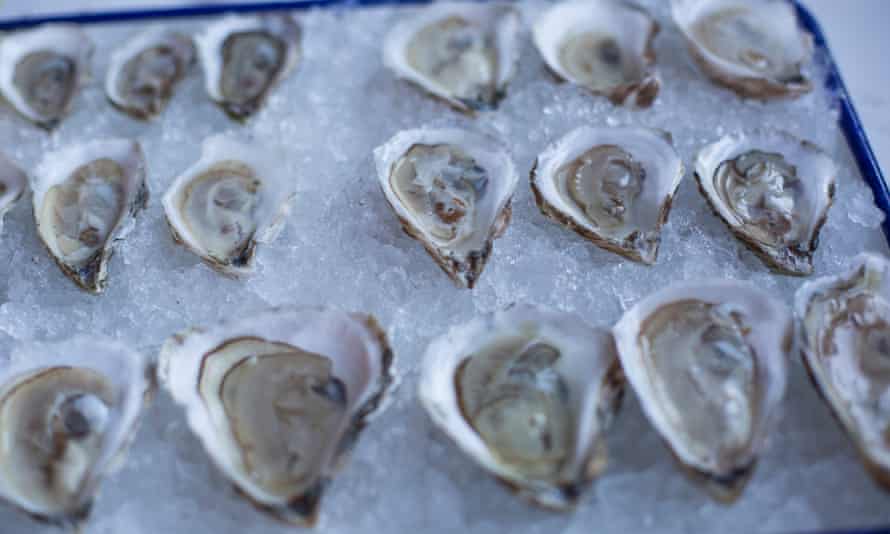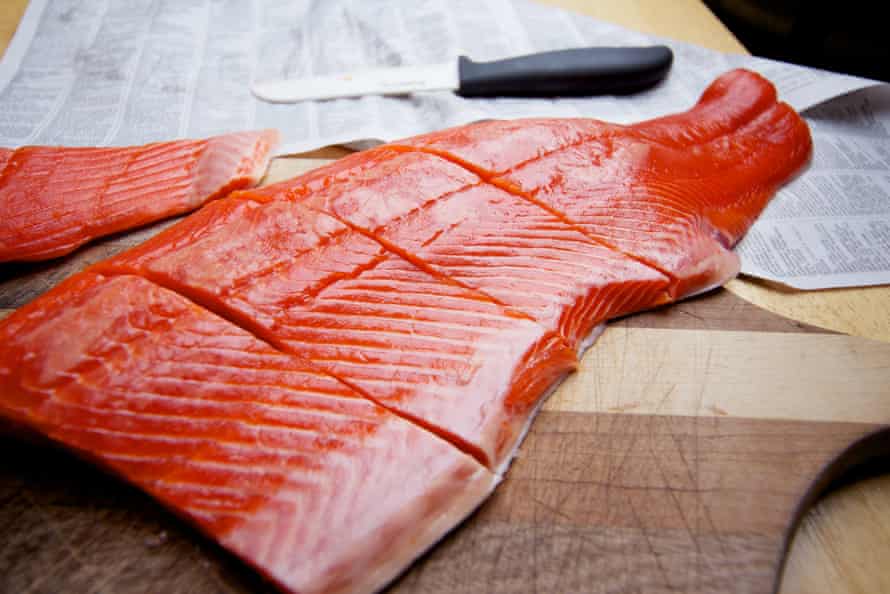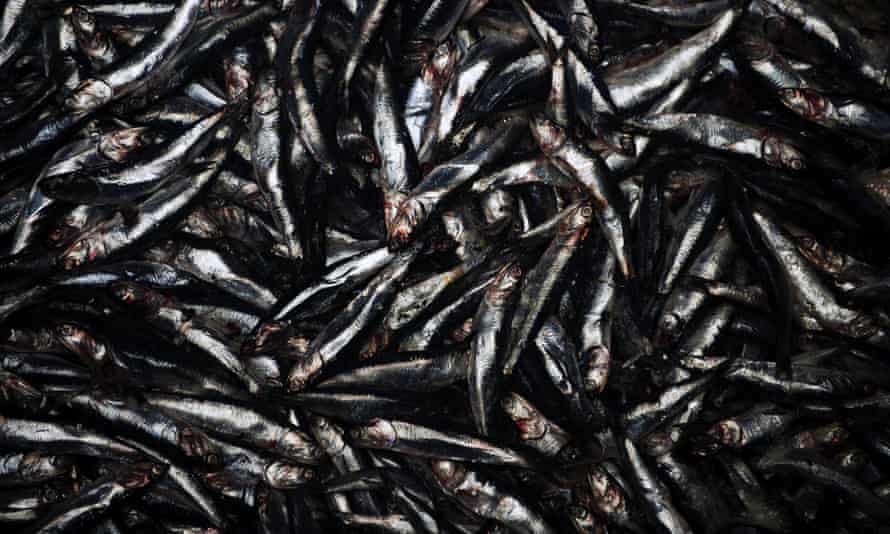Seaspiracy, the buzzy, frenetic, slick, sloppy, confused and gripping documentary that premiered on Netflix in March, is often wrong but mostly right. Led by Ali Tabrizi, and produced by the maker of Cowspiracy, Kip Andersen, the film takes you on a bumpy ride with pit stops at every imaginable ocean horror: from the slaughtered dolphins of Taiji in Japan to the sea slaves of the South China Sea, north to the fetid corpses of disease-stricken Scottish farmed salmon and out into the plastic-strewn blue of the great Pacific garbage patch. It then dumps you at the side of the road, kicks you in the ribs and shouts: “And, remember – stop eating fish!”
Not surprisingly, many fishers, conservationists and fisheries scientists feel similarly assaulted. Indignant posts abound from nonprofits to fisher’s associations asserting that, contrary to the film’s claims, sustainable fishing is possible, and that we can, if we’re careful, keep eating fish.
Many others outside the fish echo chamber have told me that after watching Seaspiracy they will no longer eat fish. And you know what? I mostly agree with them. Humanity removes 80-90m tonnes of wildlife from the oceans every year (the equivalent of the human weight of China). We call it “seafood” to feel OK about that appalling deduction. Of course, there are communities in the developing world that rely on local seafood as their primary source of protein. Please, let them have it. But for those of us who are lucky enough to have the power of choice over our diets, a move toward plant-centred eating is the only justifiable decision. Seafood should never have grown into the vast, global concern it has become. We need to return it to its artisan, community-based roots, and we need to find a path forward to aid that transition.
And yet … there is merit in keeping a toe in the water. We already befoul our oceans at a tremendous level. Were we to cut our food relationship with the seas entirely, I fear we would befoul them even more. So, in light of that, and with the idea of striking not quite a compromise but rather a managed retreat, I wanted to throw out four exceptions to Tabrizi’s rule.
1. Farmed oysters, mussels and clams

“Shellfish farming is the economic argument for clean water.” So said a clam, mussel and oyster farmer in Maine to me a few years back. Think about it: who has a bigger stake in water being clean? Sure, there is tourism. But when you have to farm something in the water, and have it pass inspection before you can sell it, you have to bet on the water being clean. Oysters, mussels and clams feed by filtering the water. If the water is filthy, they in turn bring that filth to the consumer. It’s no coincidence that shellfish farmers stand up for clean water regulations. For this reason, I will always put some bivalves in my shopping bag. If they weren’t out there, making sure the water is clean, who would do the job? Ali Tabrizi?
2. Alaskan sockeye salmon

If you eat salmon, you’ve probably never given much thought to Bristol Bay, Alaska. But this is home to one of the largest remaining wild salmon runs on earth. Every year, something like 60m salmon come into the system, a portion of which are harvested and sold all over the world. If you’ve ever bought frozen or tinned salmon from Alaska, you have eaten this fish. For the past two decades, the region has been threatened by a massive copper and gold mine project. But thanks to a campaign driven primarily by commercial and sport salmon fishers, the proposal was effectively killed off last autumn. Now, a huge swath of wild territory that supports everything from grizzly bears to eagles to indigenous communities will be spared. I will gladly put money in the pockets of the fishers who fought so hard to keep this landscape wild. Bristol Bay and indeed pretty much all Alaskan salmon get high marks from sustainability authorities, which Tabrizi dismisses as so in the pocket of the fishing industry as to be useless. But having logged many hours on Alaskan rivers and seen the meticulousness with which managers ensure yearly “escapement” goals, allowing large numbers of salmon upstream to seed future generations, I think the biology argues for itself. Bristol Bay proves that fishers and conservationists can work together, and these alliances need to become more common if fishing is to have a future.
3. Anchoveta from Peru

A dirty secret of the booming aquaculture industry (growing by more than 5% a year) is that much of it relies on the “reduction” of little fish into feed pellets. The greatest victim of this massacre is the Peruvian anchoveta, which in some years represents 10% of the entire global catch of seafood, with 99% of it being reduced. Almost none of it reaches human plates. Here I agree with the Seaspiracy sentiment: let’s stop the reduction industry dead in its tracks. But here is another thing. Peruvian anchoveta are not just extremely nutritious, they are better in terms of carbon footprint than many vegetables, and certainly any meat. They taste the same as any anchovy and could be a human staple. But because of the lock the industrial fish feed business holds on the fishery, there is almost no production for human consumption. This has to change. So, on the rare occasions when I can find them, I eat Peruvian anchoveta.
4. The fish that I catch

Here I await the wrath of vegans, but yes, I do continue to venture out to pursue, catch and kill fish myself. I avoid “catch and release”, which I believe is torture, practising what the conservationist Carl Safina calls “kill and go home” instead. That is: catch what you need, eat it all (head, too) and understand that fish are not there for your amusement. To enter a river, a bay or the azure blue Gulf Stream as a predator, as part of the Earth’s barter of give and take, is to go from being a passive observer to an active participant. You learn to interpret the rising of insects, the watermelony smell of menhaden schools on open water and the hungry whine of diving terns. You can take in some of this while you scroll through Instagram and munch on an ersatz fish fillet. But much is lost in this kind of passive observation, as is the motivation to actually do something about what’s gone wrong with life underwater.
Yes, we should heed the call of suffering that film-makers such as Tabrizi clearly heard and captured. But we can’t just take in the oceans through a one-way porthole. To save the sea we have to be participants in its drama and feel what is at stake in our bones. Watching a movie alone just won’t cut it. We’re not just spectators.
Paul Greenberg is the author of the New York Times bestseller Four Fish. His most recent book is The Climate Diet
The Link LonkMay 10, 2021 at 01:00PM
https://ift.tt/2R0ipS2
The four fish I would still eat – even after watching Seaspiracy - The Guardian
https://ift.tt/35JkYuc
Fish
No comments:
Post a Comment